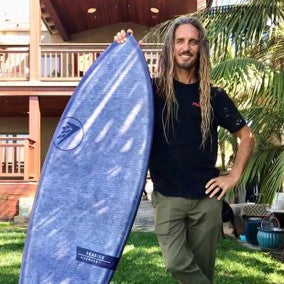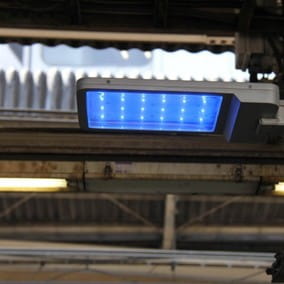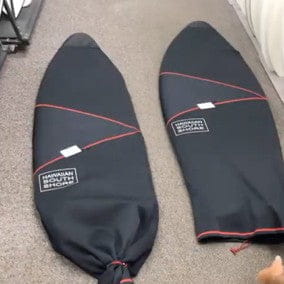Hawaiian South Shore August Newsletter
Share
Hara Hachi Bu - The Health Benefits of Eating Until You're 80% Full
I once heard it said that Thanksgiving isn’t over until you hate yourself. While that little quip might be worth a few chuckles, the sad reality is that here in the US, we often eat to excess—and not just on Thanksgiving. No matter what time of year it is, many of us are in the habit of eating until we are full—and then eating a bit more. This might bring us happiness in the short-term, but a nasty bout of indigestion isn’t fun for anyone—not to mention obesity-related diseases such as heart disease, type 2 diabetes, and various cancers.
In Okinawa, there is a different philosophy toward eating—one that mothers have been teaching their children for decades. It is the concept of hara hachi bu, which translates as “eat until you are 80% full.” Now, while this might sound like a recipe for being eternally hungry, the reality is that it actually is quite good for you. For one thing, our feeling of satiation is often delayed, so you may already be full before you actually feel full. In other words, that last 20% of your meal that you eat might actually be more than you need to feel full if you are simply patient enough to let the feeling of satiation present itself.
Further, there are numerous scientific studies that show that being in “starvation mode” slows down the aging process and the development of various diseases. This is theorized to be due to the fact that during seasons of food scarcity, animals are less likely to procreate. Evolutionarily, it is important to produce offspring, so the various species appear to have evolved the ability to slow down aging during times of famine so that they can live longer and procreate during future times of plenty. Obviously, we don’t want to subject ourselves to actual starvation—but by eating a bit less than our bodies need, it appears to be possible to leverage this evolutionary mechanism and slow down aging!
Of course, there is also the obvious benefit of losing weight. The US is quickly becoming one of the most obese countries on the planet. Our caloric intake is some of the highest in the world, and our body composition and related heart disease, diabetes and cancer rates are continuously on the rise. By ending our meals when we are 80% full, we will naturally eat less, which means less unburned calories that can turn into fat. Furthermore, since we aren’t habitually stretching our stomachs out by overeating, we will actually find that it takes less food for us to feel full—which again means consuming less calories and potentially losing weight.

Apparently, there are also specific instances where it is important to pack in the calories. If you are an endurance athlete or have just finished an eight-hour surf session, you are probably in calorie deprivation and might need a big meal to top off your energy stores. But most of us consume a lot more calories than we burn, so for us, this concept of hara hachi bu has obvious benefits.
Want proof that this philosophy works? Okinawa, which is home to the hara hachi bu practice, is one of the world’s blue zones—a half dozen spots in the world where people live noticeably longer than the average human. While there isn’t enough evidence to make the argument that hara hachi bu is the reason why Okinawa is a blue zone, there is definitely a correlation between the two. And from what we know about the health benefits of conscious eating and maintaining a low body fat index, it seems likely that eating until you are 80% full does indeed play a part in the longevity of Okinawans.
So, next time you sit down for a meal and get ready to dive in, take a moment and remind yourself to stop eating when you are 80% full. At the very least, you won’t feel weighed down by your meal, which might mean getting into the water for a surf half an hour earlier than normal!
August Member of the Month
Q&A with Jason Fujihara

When and why did you initially get into surfing?
I started surfing when I was 13 years old. I was an avid swimmer so when I tried paddling on a friends surfboard I was fascinated by the feeling of gliding on the water. A week later a few of us rented boards at Waikiki and I got run over by a canoe full of tourist but decided this is a sport for me.
Did you have a time period you laid off from surfing?
Yes when I had kids.
When and why did you start back up?
When I took my son to Disneyland he enjoyed the water ride so much we practically got back in line at least a dozen times. Started him at Waikiki Walls, progressed to Makapuu, then Makaha and Pipeline.
What is your favorite thing about surfing?
Being in the water and moving with nature.
Where is your favorite place to eat after surfing?
Café Haleiwa, Kua Aina Sandwich
What is your favorite item on the menu?
Any breakfast is great. Avocado Burger
What other hobbies do you have besides surfing?
Learning about science and technology.
Tell us about when you were involved with surf contest.
When my son joined NSSA I was asked to be a judge by Linda Robb, Kalani Robb’s mom. It was fun but I had a difficult time to sit and watch so I would end up in the water about mid-morning, sometimes getting in the way of the contestants. The kids were great and always wanted me to remember them but it worked the other way too. I could surf any spot on the island and someone would recognize me and would eagerly give me waves. I made friends with their parents who surfed and got invited to surf with them at their favorite spots.
What type of work do you do?
I have been involved with different aspects of computers since graduating from college.
Tell us about the board you recently purchased from us. What model and size is it, and how do you like its performance?
Got a 6’ Libtech Puddle Jumper HP and only got a couple hours and already know it’s going to be a fun board. It’s setup with FCS 2 quad large performer fins, Octopus deck-pad and a FCS Freedom leash. All three new technologies that work GREAT. All thanks to Shaun and Brett who gave excellent recommendations and setup everything for me.
Do you have any additional comments?
The staff is friendly, knowledgeable and excited about what they do. Thank you guys for all the recommendations.
Big Wave Safety Course
Thank you to Painting with a Twist!

Here at Hawaiian South Shore we have always been big advocates of water safety and preparedness, which is why we partner with Ricardo Taveira at Hawaii Eco Divers each summer to host one of his big wave safety and apnea courses. This year’s course was a great success, as a solid group of surfers and water-people pushed their limits and learned the physiology and science behind apnea and water safety.
The course is typically a combination of classroom activities and in-water training, and having a quiet, comfortable venue in which to host the classroom portion of the course is essential to a successful event. This year the folks over at Painting With a Twist were generous enough to let us use one of their rooms for the training, and we couldn't have asked for better hosts.
Jimmy, Megan, and Megan’s mom Cynthia have always been entrepreneurs. After working with her father in his market while growing up, Megan knew that business was in her blood, and when she met Jimmy in college in Colorado they started looking for the type of business that really spoke to them. On date nights they often went to a “painting and sipping” spot in Denver that they really enjoyed, and one day they realized there wasn’t one in Hawaii. They knew they had found their niche and decided to come to the islands and start a location through the Painting With a Twist franchise.
When Jimmy, Megan, and Cynthia aren’t graciously hosting water safety courses, they welcome guests who can sip wine and work on making “fun art” (as opposed to fine art). This concept has become super popular with the millennial and Gen X generations, and even Baby Boomer are getting in on the action! Painting With a Twist is always a hopping night spot, with groups sometimes coming for birthdays or other events, and also individuals coming to enjoy a night out and mingle.
We are super stoked that Jimmy, Megan, and Cynthia decided to open a Painting With a Twist here on Oahu. It is great to have them on the island, their establishment is a ton of fun, and of course we hugely appreciated getting to host our water safety class with them. Check them out on Facebook or call them up to book an evening of fun!
Firewire Woolight
A New Approach to Surfboard Construction

For all of the advances that we have seen in board design over the years, one thing has remained pretty much unchanged—the way that we actually construct our boards. Although a variety of epoxy and EPX boards have popped up over the past two decades, the number of truly original innovations can be counted on one hand. For the most part, the majority of our boards are built exactly as they were in the late 1960’s—a block of polyurethane foam is shaped and then laminated with fiberglass and resin.
Companies such as Firewire have been a rare example of board builders who are looking outside the box for new construction processes, and they are now poised to revolutionize the surf industry once again. The Woolight project is Firewire’s latest innovation, and it came about totally by accident.
Kiwi shaper, Paul Barron, was laminating a board a decade ago, and accidentally spilled resin on his wool shirt. When he saw how the wool hardened with the resin, it occurred to him that he could theoretically laminate boards with wool fabric. After testing his theory, he came up with a formula that worked—and that is way better for the environment. Using sheep-friendly wool, Barron uses a vacuum-pressure technique to press the wool into a thick wool-and-bioresin composite that is as strong as fiberglass and polyurethane. Building boards with this fabric rather than fiberglass reduces carbon emissions by as much as 40% and cuts VOC emissions by 50%, which means that although these Woolight boards aren’t necessarily green, they are a lot greener than a normal board. The wool-laminated boards also have better flex characteristics, which reduces vibrations while catching and riding waves.
Being a leader of surfboard innovation, Firewire was naturally attracted to this idea and has decided to add Woolight to its selection of construction options. Numerous board designs will be built with Woolight in the coming year, opening up a new and exciting world of both performance and sustainability in the surfboard market.
Here at Hawaiian South Shore, we have always been excited by the latest technology that is applied to building surfboards, particularly when it is good for the planet. We will soon be getting three Woolight boards in the store—some of the first boards commercially available from Firewire—and can’t wait to check them out. We hope you will come to check them out too. After all, when advancements in board design only happen once every few decades, it’s definitely something you don’t want to miss!
How Blue Light is Saving Japan

The great run of swell we have had so far this summer has been tempered somewhat by the absence of one of Hawaii’s greatest surfers in the lineup. Sunny Garcia has been interned in Oregon hospital, Portland for the past few months, in a coma after a suicide attempt during the spring. While Sunny has reportedly struggled with depression for quite some time, this tragedy still came as a surprise for many surf fans, especially here in Hawaii, and the entire surf community has rallied to let Sunny and his family know how much they mean to him.
Depression and suicide are a scary topic, and one that is actually quite prevalent in Japanese culture. Japan has one of the highest suicide rates among OECD nations, and a large percentage of those suicides happen in train stations and underground train tunnels, where people jump off of platforms in front of oncoming trains. This is obviously quite sad, and also quite distressing for other passengers and train conductors who observe these violent deaths. To try to help prevent these shocking suicides, the Japanese government has started installing blue LED lights in train stations. As it turns out, blue light has a calming effect on people—and there are numbers to prove it! In Japanese train stations that have blue lights installed near the edge of platforms, they have seen an 84% drop in suicide rate! Meanwhile, other nearby stations that don’t have these blue lights have not seen a corresponding increase in suicide attempts, which indicates that the overall number of suicides is decreasing, most likely due to the presence of these blue lights!
We surfers spend a lot of time swimming around in the blue ocean—a place that brings us great joy and helps to alleviate the stress of 21st century life.
Hopefully, Sunny Garcia will recover quickly, because we’d love to see him out in the water again.
Introducing our New Board Bag
Ask about the Member Exclusive 15% Discount!

I’ve been working on a new board bag, for the longest time I wanted something that works like a knit bag but had a little more protection. After over 20 attempts of making it with different material and testing it I finally found something I like.
It’s a board bag that’s made out of a 2 mm neoprene wet suit material. It has a lot of stretch so it fits most stubby boards up to 6’2. I like the 2 mm because it gives some protection when I throw it into my car. I made it 19” wide but it stretches to fit board that’s 23” wide. The nose had a great deal of strength around the stitching so it won’t tear easily when you shove into the bag. We also used a material that’s used for bullet proof jackets on the nose so it has cushion and strength. We sell it for $80 which is slightly higher than a regular knit bag but sells less than a daylight bag that is usually bulky. I notice that my wax doesn’t stick to it like a knit back so it makes it easer to take out of the bag. We slowly are working on adding more things to our Hawaiian South Shore line up.
OH! Since your a rewards member I wanted to hook you up with a 15% off special on this board bag. It’s only good until the end of August 2019. It’s my way of saying Thank you very much for taking the time to read our newsletter. After you use the bag please give me a review and let me know what you think.
- David


1件のコメント
Mahalo for the August newsletter! Always enjoy staying updated with the latest surf news and product releases from Hawaiian South Shore. Great work